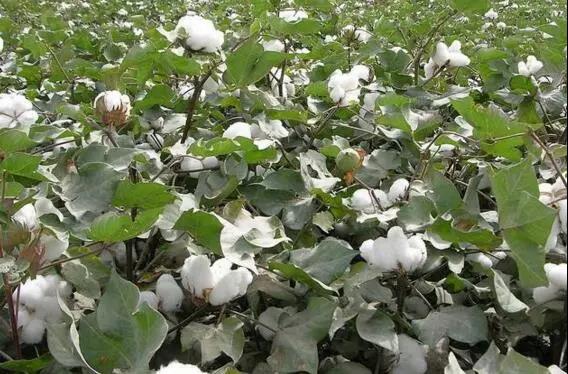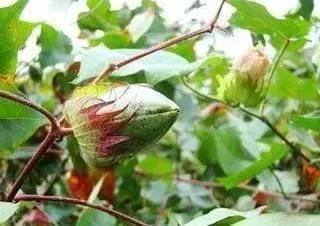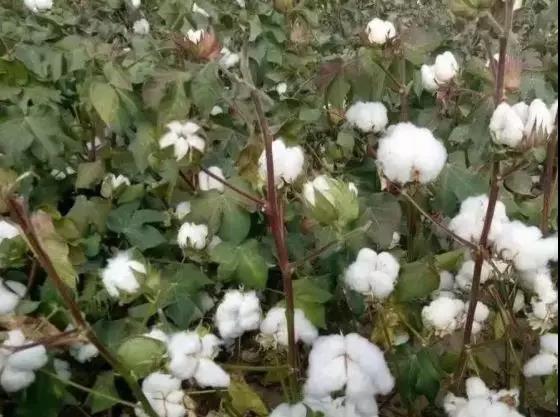At present, China's cotton has gradually entered the maturity stage of bolls. In order to strengthen the field management guidance in the late cotton area and promote the quality and efficiency of cotton production, the National Agricultural Technology Extension Service Center and the Ministry of Agriculture and Rural Cotton Experts Guide Group, according to the current cotton growth in different cotton areas. The following technical guidance is proposed for the climatic characteristics and different cultivation and planting patterns.
一、One season, one season, spring cotton field

(1) Field management. In the late stage of premature aging cotton field, secondary growth is likely to occur, and new axillary buds should be removed in time. Late evening and Wangchang cotton fields advocate the removal of empty branches and old leaves to prevent the field from being covered. For lightly lodging cotton fields, the plants can be ridged to improve the ventilation and light transmission conditions in the field. At the same time, timely removal of malignant weeds such as tall weeds and dodders.
(2) Foliar spray fertilizer.
For cotton fields affected by flooding or waterlogging and signs of premature aging, foliar spray fertilizer can be used, and commercial foliar fertilizer or 3% urea solution plus 0.5% potassium dihydrogen phosphate solution should be sprayed every 5-7 days. Spray even 2 to 3 times. Cotton fields that require defoliation and mechanical harvesting do not require foliar spray fertilizer. Foliar spray time should be carried out in cloudy or evening to prevent "burning leaves". In order to reduce labor, blade spray fertilizer can be combined with spraying chemical pesticides.
(3) Prevention and control of pests.
Intensify the prevention and control of insect pests such as cotton planthopper, cotton blind mites, Spodoptera litura, and beet armyworm, and do a good job of rule prevention and control, and reduce the occurrence of large-scale pests and diseases in cotton fields caused by factors such as cotton plant length or late maturity. probability.
(4) Xinjiang cotton area.
First, strengthen the management of fertilizer and water control based on promoting early maturity. After the topping, the rational production structure and the canopy structure of the cotton field will be shaped by chemical control to prevent the cotton field from becoming closed. Second, strengthen the comprehensive management of disaster prevention and reduction, and focus on Helicoverpa armigera, cotton blind mites, red spider mites and bell disease prevention and control, strengthen post-disaster prevention work, especially extreme disaster weather such as disaster relief and rain disaster; thirdly, strengthen defoliation and ripening management, according to cotton boll opening rate and climatic conditions, timely Spraying defoliation ripening agent; Fourth, strengthen harvesting management, remove field debris, residual film, drip irrigation pipe before harvesting in cotton harvesting field, harvest when cotton leaf defoliation rate ≥93%, boll opening rate ≥95%, Hand-collecting cotton fields should eliminate the "three-wire" mixing or mixing.
Second, seedling transplanting cotton field

(1) Timely control.
Late-maturing late-maturing cotton fields, when most bolls reach 70%-80% of the boll period (that is, more than 45 days), and the maximum temperature for continuous 3 to 5 days is above 20 °C (usually around mid-October), it should be ripened in time. Treatment, using 40% ethephon 200 ml / mu, spray 40 ~ 50 kg / mu of water, so that the upper and lower leaves of the cotton plant evenly.
(2) Prevention and control of pests and diseases.
Through the application of potassium fertilizer, sputum and waterlogging, and application of foliar fertilizer, the occurrence of "two-sickness disease" can be prevented; for cotton fields with serious disease and serious disease, measures such as rooting and removing diseased plants can be used. Enhance ventilation, light transmission, drainage and stain reduction in the field to prevent rotten bells. The bell disease that occurs during the boll opening period is likely to cause rotten bells. It can be sprayed with 200 times Bordeaux mixture or 50% Dyson zinc WP 600 times, and sprayed once every 10 to 15 days for 3 to 4 times. It is necessary to focus on the control of Spodoptera litura and B. tabaci, and use adult sex agents to induce and kill adult larvae. The larvae can be controlled by biological agents such as nuclear polyhedrosis virus insecticides, and the optimal control period should be selected before they are dispersed. In the 2nd instar larval stage, low-volume spraying is carried out. In addition to the uniform application of the medicine on the plant, the ground near the rhizosphere of the plant should also be sprayed to prevent the larvae falling off the ground from leaking. When the amount of tobacco aphid occurred (3 heads per square centimeter), it was sprayed with 15000 times of 50% nitenpyram soluble granules.
(3) Disaster reduction and recovery.
Pay close attention to the impact of meteorological disasters such as typhoons, and actively adopt technical measures for disaster prevention and mitigation. After the typhoon storm, it is necessary to timely remove the waterlogging, the cotton plant and the appropriate soil to fix the root. According to the situation of the cotton plant after the disaster, it can be combined with the top dressing to promote the growth. At the same time, it is timely harvested, and the best harvesting period is about 1 week after the cracking of the cotton bell shell.
Third, wheat (oil) after the live cotton field

(1) Nutrient replenishment.
After the wheat (oil), the live cotton usually has more bells on the upper part. In the case of insufficient growth, in the middle of September, the special fertilizer for foliar application should be sprayed in time to supplement the nutrition. It is also possible to directly spray 2% urea and 0.1% potassium dihydrogen phosphate solution to increase the cotton boll and increase the boll weight.
(2) Scientific control.
After the wheat (oil), the live cotton is flowered into a bell, which can be concentrated in the first ten days of October. It is suitable for sunny and windless weather, with thidiazepine powder 30-40 g/mu and 40% ethephon 200-300 ml/mu. 40~50 kg/mu for whole field spray. The defoliation ripening agent is required to be used now. If it is raining 8 hours after spraying, it should be refilled. Spraying should be evenly sprayed, so that the upper and lower leaves of the cotton plant are evenly dosed, and the whole plant of cotton is treated. For cotton fields that are late in maturity or delayed in spraying, the dosage should be appropriately increased. After defoliation and ripening treatment, the floc is concentrated in 15 to 20 days, and attention should be paid to timely harvesting.
(3) Disaster prevention and reduction.
For dry cotton fields, water should be poured in time. If the cotton plants fall due to typhoon and rain, it is necessary to strengthen post-disaster support and recovery management. In the later period, we will focus on the prevention and control of pests and diseases such as red spiders and cotton bollworms, and adhere to comprehensive prevention and biological control.
Contact: Mr. Ma
Phone: +86-0374-5699688
Tel: +86-0374-5699688
Email: [email protected]
Add: Fine Chemical Industry Park, Jianan District, Xuchang, Henan, China